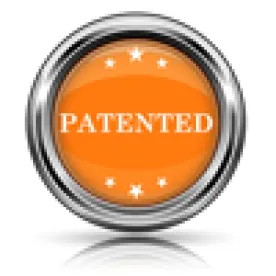The Supreme Court has made it easier for patent owners to prove willful infringement and entitlement to enhanced damages. In a unanimous opinion issued yesterday in a pair of cases decided together, Halo Electronics, Inc. v. Pulse Electronics, Inc. and Stryker Corporation v. Zimmer, Inc., the Court did away with the Federal Circuit’s “unduly rigid” test for proving willfulness, which had allowed even “wanton and malicious” infringers who intentionally set out to steal the patent owner’s ideas and business to evade liability for enhanced damages if clever counsel were later able to articulate non-trivial—even though unsuccessful—infringement or invalidity defenses.
Writing for the Court, Chief Justice Roberts explained that section 284 of the Patent Act provides that in a case of infringement, courts “may increase the damages up to three times the amount found or assessed.” In its 2007 en banc decision in In re Seagate Technology, LLC, 497 F.3d 1360, the Federal Circuit held that a district court may increase damages pursuant to section 284 only if the patent owner first showed by clear and convincing evidence that the infringer had acted “despite an objectively high likelihood that its actions constituted infringement,” and then also showed, again by clear and convincing evidence, that the risk of infringement “was either known or so obvious that it should have been known to the accused infringer.” In Halo, the Court held that the Federal Circuit's test is not consistent with section 284.
Returning to first principles, Chief Justice Roberts observed that “[e]nhanced damages are as old as US patent law,” and have as their chief purpose not compensation to the patent owner—who is compensated by the award of actual damages or a reasonable royalty—but punishment of the conscious and deliberate infringer. The Seagate test frustrated that purpose, however, by allowing a deliberate infringer, “such as the ‘wanton and malicious pirate’ who intentionally infringes another’s patent—with no doubts as to its validity or any notion of a defense—for no purpose other than to steal the patentee’s business” to escape willfulness liability if he presented “a substantial question as to the validity or non-infringement of the patent” during the course of the litigation, even if he was not aware of any such argument at the time he undertook his infringement.
“In the context of such deliberate wrongdoing,” the Chief Justice observed, “it is not clear why an independent showing of objective recklessness—by clear and convincing evidence, no less—should be a prerequisite to enhanced damages.” Culpability is generally measured against the knowledge of the accused at the time of the conduct in question, not against “the strength of his attorney’s ingenuity” in later fashioning a reasonable, if ultimately unsuccessful, defense. The same applies here: “The subjective willfulness of a patent infringer, intentional or knowing, may warrant enhanced damages, without regard to whether his infringement was objectively reckless.”
The Chief Justice went on to observe that the language of section 284 is unrestricted—it “contains no explicit limit or condition”— and indeed, “allows district courts to punish the full range of culpable behavior.” The language of section 284 is also permissive—courts “may increase the damages up to three times the amount found or assessed.” The Court has emphasized that the word “may” connotes discretion; thus the provision must be read as granting district courts the discretion to decide whether to award enhanced damages and in what amount. But discretion, the Chief Justice cautioned, “is not whim,” and the development of the law of enhanced damages under the Patent Act over the past 180 years reflects a recognition that such damages “are not to be meted out in a typical infringement case but are instead designed as a ‘punitive’ or ‘vindictive’ sanction for egregious infringement behavior.”
The Chief Justice explained that while the principal problem with the Seagate test is that it has the effect of “insulating some of the worst patent infringers from any liability for enhanced damages,” it is also inconsistent with section 284 because it requires clear and convincing evidence to prove recklessness. Just as the Octane Fitness court rejected the Federal Circuit’s requirement that a prevailing party must prove entitlement to an award of attorney’s fees under section 285 by clear and convincing evidence because there was no statutory basis to support such a heightened standard of proof, so too here. “Like §285, §284 ‘imposes no specific evidentiary burden, much less such a high one.’”
The Court also rejected the Federal Circuit’s trifurcated standard of review of enhanced damages awards—de novo review for objective recklessness (the first part of the Seagate test); substantial review for subjective knowledge (the second part of the test); and abuse of discretion for the ultimate decision whether to award enhanced damages—in favor of an abuse of discretion standard. Having determined that section 284 gives district courts discretion to award enhanced damages and to determine their amount, the conclusion that such decisions should be reviewed for abuse of discretion follows naturally, the Chief Justice explained.
In arriving at its rejection of the Federal Circuit’s Seagate test, the Court dismissed respondents’ argument that Congress ratified Seagate when it added section 298 to the Patent Act, which provides that “[t]he failure of an infringer to obtain the advice of counsel” or “the failure of the infringer to present such advice to the court or jury, may not be used to prove that the accused infringer willfully infringed.” The provision’s reference to willful infringement cannot be an endorsement of Seagate’s willfulness test, the Chief Justice observed, since “willfulness has always been a part of patent law, both before and after Seagate,” and nothing in section 298 suggests Congress ratified the particular conception of willfulness reflected in Seagate.
The Court also rejected respondents’ underlying policy argument that making it easier to prove willfulness will “embolden [patent] ‘trolls.’” Such a concern may have merit if enhanced damages were to be awarded in “garden-variety cases,” the Chief Justice noted. “As we have explained, however, they should not be. The seriousness of respondents’ policy concerns cannot justify imposing an artificial construct such as the Seagate test on the discretion conferred under §284.”
By making it easier for patent owners to prove their patents were deliberately infringed and that they are entitled to enhanced damages for the wanton and malicious pirating of their ideas, the Supreme Court’s opinion affirms the importance and value of intellectual property, and sends a clear signal that such deliberate infringement will no longer be tolerated. And by restoring to the discretion of the district courts the determination of whether to award damages, and in what amount, the Court’s opinion ensures that the “full range of culpable conduct” may be punished—and thereby deterred. American innovation will be all the stronger for it.






 />i
/>i
